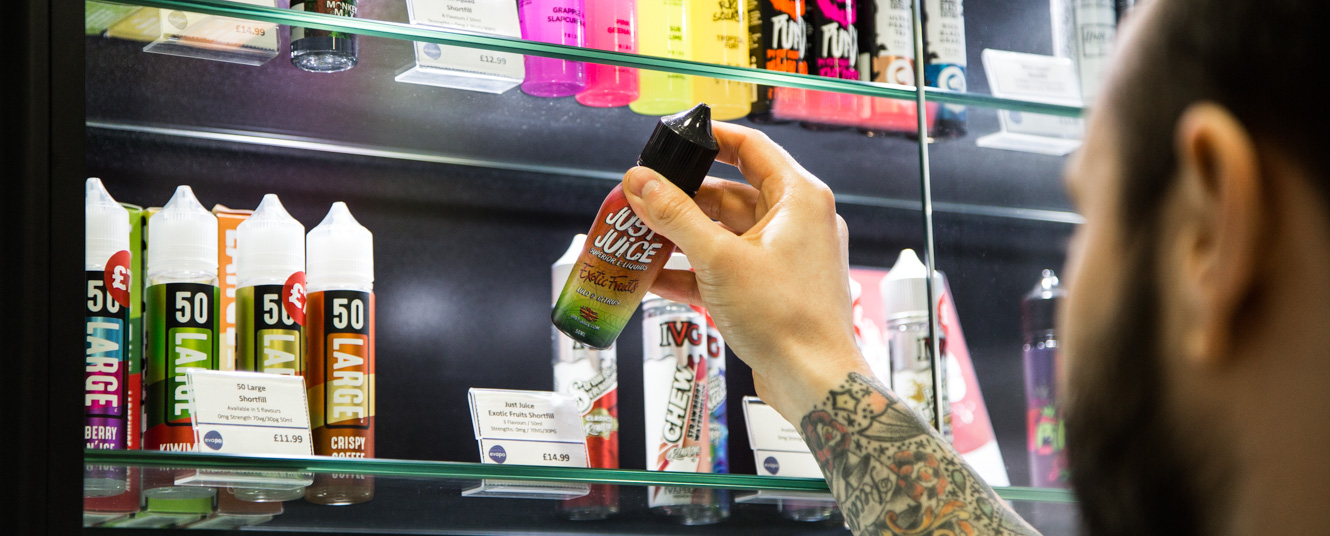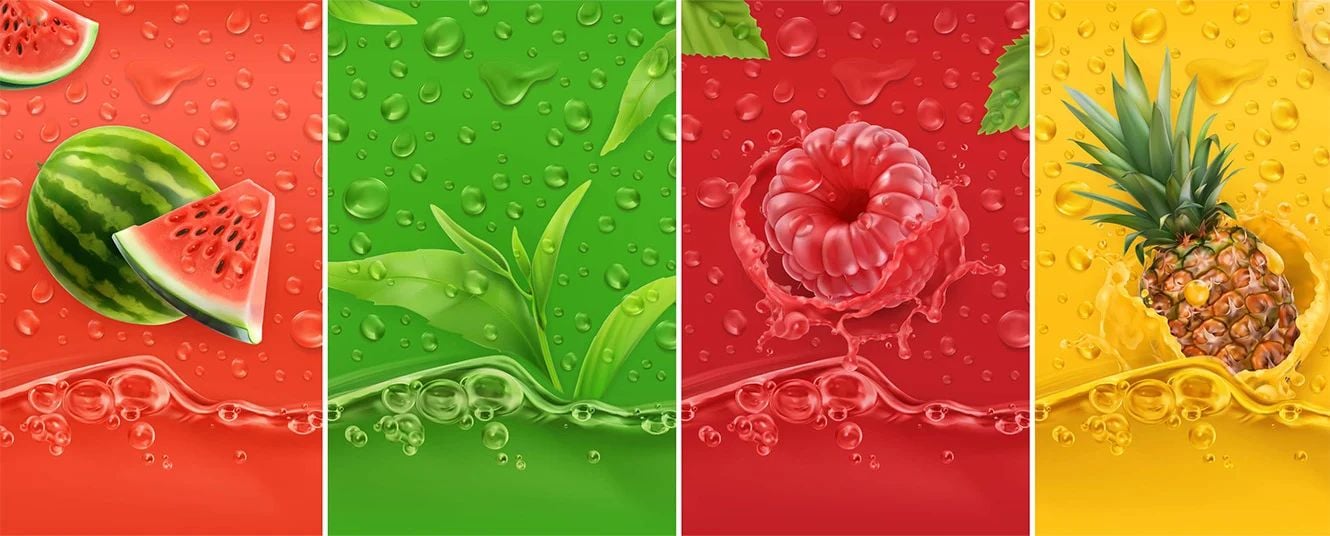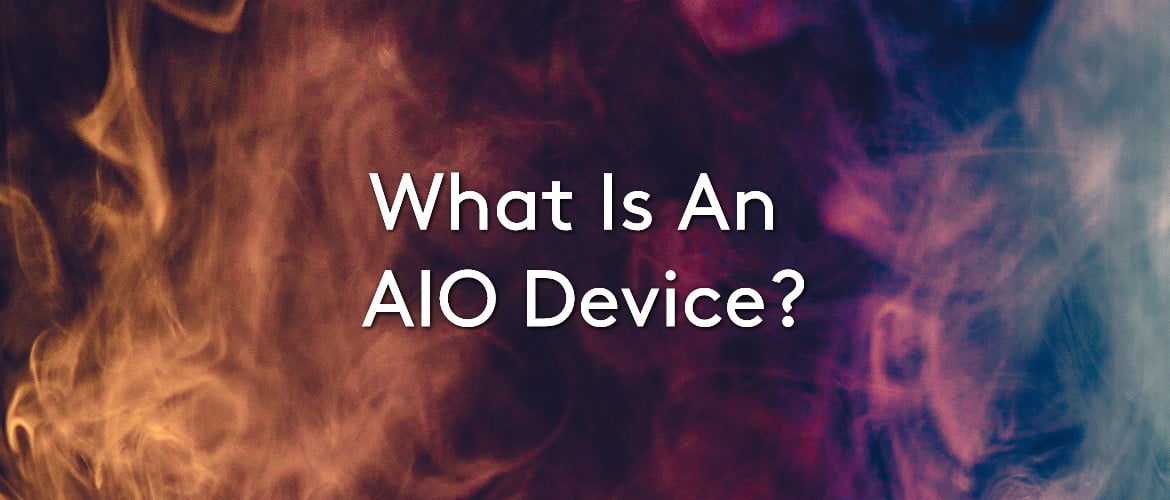Vape juice is a popular name for e-liquid – the essential ingredient that makes vaping possible.
Knowing exactly what e-liquid is, and the ways you can buy and use it, is essential for all vapers, especially new ones. From e-liquid ratios to the characteristics of types of vape juice and the devices they are best suited for, there is a lot to learn.
Get to grips with all of the basics as well as some great things to know about e-liquids in our ultimate guide to vape juice.
What is an e-liquid?
An e-liquid is a specially formulated liquid that has been designed to be used with vape devices. The e-liquid is heated by the coil contained in the vape device, which causes the e-liquid to vaporise. This vapour can then be inhaled, creating the taste, sensation and potential to deliver nicotine that vaping is characterised by.
Key vape juice facts:
- The vapour produced by e-liquids not only replicates the feel of smoking to feel familiar to ex-smokers, but is also an effective way to deliver nicotine
- E-liquids are specifically formulated to be vaporised and inhaled safely
- Vape juices come in a huge variety of flavours and also ratios, meaning they have different combinations of their base ingredients
Main ingredients of e-liquids
Vape juices are made up of several important base ingredients and the ratios of these determine the characteristics of the e-liquid. All of the ingredients used in reputable e-liquids are food grade and safe to inhale. The key components of e-liquids are:
Propylene glycol (PG)
Propylene glycol, which is commonly referred to as PG, is a synthetically made compound that helps ensure that flavouring and nicotine remain well mixed throughout the e-liquid. It has a relatively thin consistency and is responsible for creating the “throat hit” that is typically associated with the sensation of smoking.
PG is used in a wide range of other everyday products, including pharmaceuticals, cosmetics, and food.
Vegetable glycerine (VG)
Vegetable glycerine, or VG, has natural origins and is generally made from plant-based materials, such as palm or coconut oil. It has a slightly thicker consistency than PG and has a very mild sweet flavour. VG’s main role in vape juice is the way it affects vapour production, as high VG liquids produce denser vapour.
VG is used in many everyday products, including shampoo, skincare products and food.
For more insights into these essential ingredients, have a look at our blog post, Everything you need to know about PG and VG.
Nicotine
E-liquids often contain nicotine and are available in a variety of different concentrations and options. Concentrations start at 3 mg/ml and range all the way up to 20 mg/ml. In the UK, nicotine strengths are capped at 20 mg/ml, making this the highest strength available on the market. You can also buy nicotine-free vape juices.
The nicotine used in e-liquids can be one of two types: nic salts or freebase. Freebase was the first type to be popularised, and it is a naturally occurring nicotine. The nicotine is extracted from a tobacco leaf using an alkaline based method then formulated in a lab and used to create freebase nicotine. It is known for having a more prominent throat hit than nic salts, which are extracted from the tobacco leaf using an organic compound base.
Nic salts only became available in the last 5 years or so, but have quickly become the most popular type of e-liquid available. They are absorbed into the blood more quickly than freebase nicotine and are known to have a smooth feeling inhale even at higher nicotine strengths. Find out more in our post, Nic salts vs. freebase nicotine.
Flavourings
The flavourings added to e-liquids allow for a huge variety of distinct tastes. These are created using a selection of natural flavourings and contain no artificial ingredients, sweeteners or additives. The flavourings used in e-liquids are all food grade and are approved and tested by the MHRA.
Flavourings usually make up 5 – 20% of the overall e-liquid and VG and PG are used to dilute the flavours and also help create a liquid that is suitable for use in vapes.
Understanding e-liquid ratios (VG/PG)
The two main base liquids of vape juice are VG and PG and these are included in different ratios to create different results. VG and PG have their own characteristics, VG is best for vapour production, for example, while PG is very efficient at carrying flavour and offers a more noticeable throat hit. They also have different consistencies, with VG being thicker and PG thinner.
VG and PG are included in e-liquids to varying degrees to create different kinds of vaping experience. You will see there are many options offering a 50/50 ratio, which is a balanced vape juice offering the best of both worlds. There are also whole range of other options, including a variety of high VG or high PG splits, allowing you to tailor your experience.
When it comes to picking out the right ratio of e-liquid, the most important deciding factor is the type of device you plan to use it in. Using the wrong type of e-liquid can impact your experience and even cause problems for your vape kit. For starter and pod kits, use a 50/50 or high PG e-liquid. For sub-ohm and advanced kits, high VG vape juices are best.
If you would like to find out more about the way different VG and PG ratios create different experiences, check out our post ‘Best VG/PG ratio for flavour’.
Types of e-liquids
There are a huge range of different types of vape juice, suitable for a variety of preferences and tastes, including:
Freebase e-liquids
Standard e-liquids are typically made using freebase nicotine, which is absorbed into the bloodstream at a reasonable rate and offers a potentially harsh throat hit. E-liquids made with freebase nicotine are sometimes referred to as ‘traditional’ vape juices. This is because their formulation was the first to hit the market and was the only type of nicotine-containing e-liquid available for a number of years.
Nicotine salts
Nicotine salts, also known as nic salts, are a newer addition to the market and they offer a faster absorption rate, more intense flavours and a smoother throat hit than freebase alternatives. Nic salts are now the most common form of nicotine-containing e-liquids sold. Discover more about nicotine salts, their benefits and their popularity in our guide: What are nic salts?
Bar salts
Bar salts are a modified form of nic salts which also use nicotine salts as a base. They have been designed to offer an intense flavour experience by using twice as much flavour concentrate as is found in standard e-liquids, along with a smooth inhale and quick absorption. Get all of the details in our post about the differences between nic salts and bar salts.
CBD e-liquids
CBD e-liquids are a type of e-liquid that don’t contain nicotine, but instead offer a way for people to incorporate a CBD supplement into their daily routine. Find out more in our guide to CBD e-liquids or check out the various options available in our post about the best CBD vape juices.
Flavour categories
Vape juices also come in a huge range of different flavours, making it easy to find the one that suits your personal taste. Some of the most popular categories include fruits, desserts, tobacco, menthol, and beverages.
Nicotine strength guide
E-liquids are available in a variety of different nicotine strengths, from nicotine-free to 20 mg/ml (the maximum strength allowed in the UK). To work out which nicotine strength might be suitable for you, it is useful to look at your previous smoking habits.
The general rule of thumb for converting the number of cigarettes smoked to nicotine strength is:
- Light (less than 5 cigarettes per day), social, or infrequent smoker - 0 mg – 3 mg/ml
- 5 – 10 cigarettes per day - 5 mg - 6 mg/ml
- 10 – 20 cigarettes a day - 10 mg – 12 mg/ml
- Heavy smoker 20+ cigarettes per day – 18 mg – 20 mg/ml
However, some experimentation may be needed to find the strength that most effectively manages your nicotine cravings. Using a much higher nicotine strength than your body is used to may make you feel unwell. You will find more detail in our guide to nicotine strengths.
There are also a range of nicotine-free vape juices available, for those who are looking to replace the habit of smoking but don’t feel they need a nicotine content, or have cut their nicotine intake down over time and no longer need it
How to choose the right e-liquid for you
Whether you are picking out a new vape juice or you are new to vaping, there are a few things to think about.
- What device are you using? Is it a starter kit that is best suited to 50/50 or high PG e-liquids? Or an advanced kit that is better suited by high VG vape juices?
- What strength of nicotine do you prefer? Always check the nicotine strength and think about it in regards to your previous usage or smoking habits.
- What kind of flavours do you like? Choosing flavours that suit your general tastes is a fun and easy way to get started.
Trying out a variety of different nicotine types and formulas while also experimenting with flavours and making gradual changes can help you get an idea of what works for you.
How to use and handle e-liquids safely
Keep your e-liquids safe by learning how to use and store them.
How to fill vape devices correctly
If you are using a device with refillable pods and a fixed coil, all you need to do is fill the pod with e-liquid and let it sit for 5-10 minutes before inserting and beginning to vape.
If you are using a device with replaceable coils, squeeze a few drops of e-liquid onto any exposed cotton on the coil, this is known as priming. Once you have primed the coil, insert it, and fill the tank with e-liquid, then let it sit for 5-10 minutes to become fully saturated.
Tips to avoid spills and leaks
To avoid spills and leaks, it is best to ensure that your tank isn’t too full or too empty. It is also important to make sure you are using the right type of e-liquid for your device.
Where possible, it is a good idea to keep your vape kit upright as much as possible. Although pods and tanks are designed to minimise the risk of leaking, spending too much time on their side or upside down can make leaking more likely.
Safe handling of nicotine-containing liquids
If you get nicotine-containing e-liquids on your hands while filling a vape, be sure to wash them to avoid absorbing nicotine through the skin.
How to know when an e-liquid is out of date
E-liquids have a best before date printed on the bottle, so you can quickly check whether it is still in date or not. Some change in colour is normal in open bottles due to oxidisation. Similar to the way an apple will start to turn brown once cut, an e-liquid may become darker in colour once the seal has been broken, especially high nicotine strength liquids.
How to store e-liquids
Store unused e-liquids in a cool, dry place out of direct sunlight. E-liquids in the UK must have child-proof packaging similar to medicine bottles, so the lids cannot be simply unscrewed but must also be pushed down. However, it is still wise to keep them out of the reach of children.
E-liquid regulations in the UK
There are a series of regulations around the manufacture and sale of e-liquids in the UK that help ensure they are sold and used safely and responsibly. These regulations came in as part of TPD and are seen by many countries as the blueprint for the sale of e-liquids. They are a huge part of the reason for how successfully vaping has been utilised in the UK as a stop smoking aid.
The current regulations in the UK affecting e-liquids include:
- Only bottles 10ml or less can contain nicotine at the point of sale
- Shortfill bottles (bottles larger than 10ml) are therefore sold without nicotine, but nicotine can be added after purchase using nicotine shots
- Nicotine strength is capped at 20 mg/ml. It is important to avoid any e-liquids claiming to have a stronger nicotine strength as they are not compliant.
- All nicotine containing e-liquids are regulated by the MHRA and must be approved before they can be sold
- All nicotine containing e-liquids will have nicotine warnings printed on the bottle, and all e-liquids are sold in child proof bottles
- Certain ingredients which are known to be harmful, such as diacetyl, are banned from being used in e-liquids
With so many vape juices out there, it can seem as though you are spoilt for choice. However, now that you have all of the basic information covered, you will be ready to start experimenting with the options and find the one that works best for your personal taste. Ready to explore? Discover our huge range of e-liquids.





































